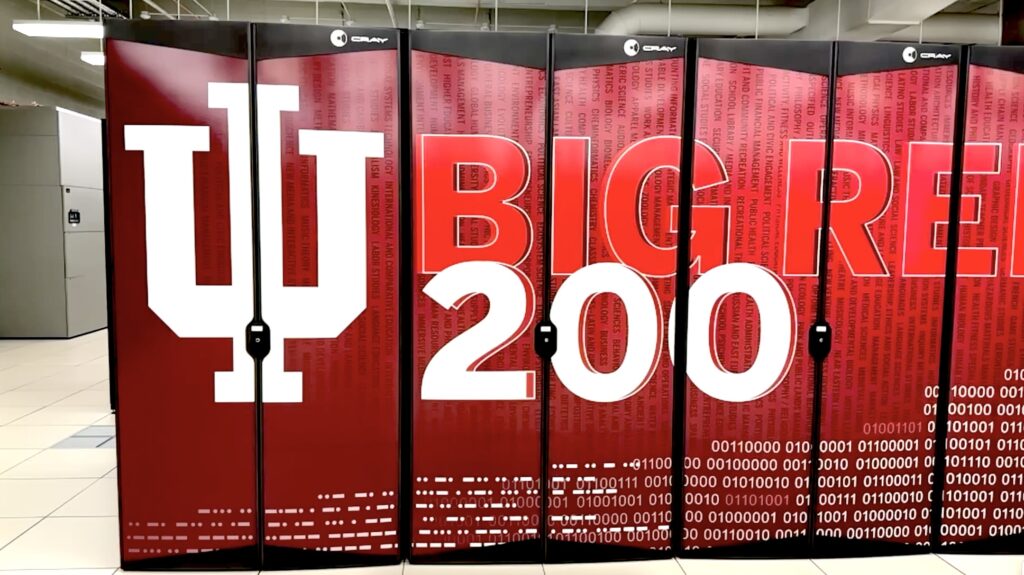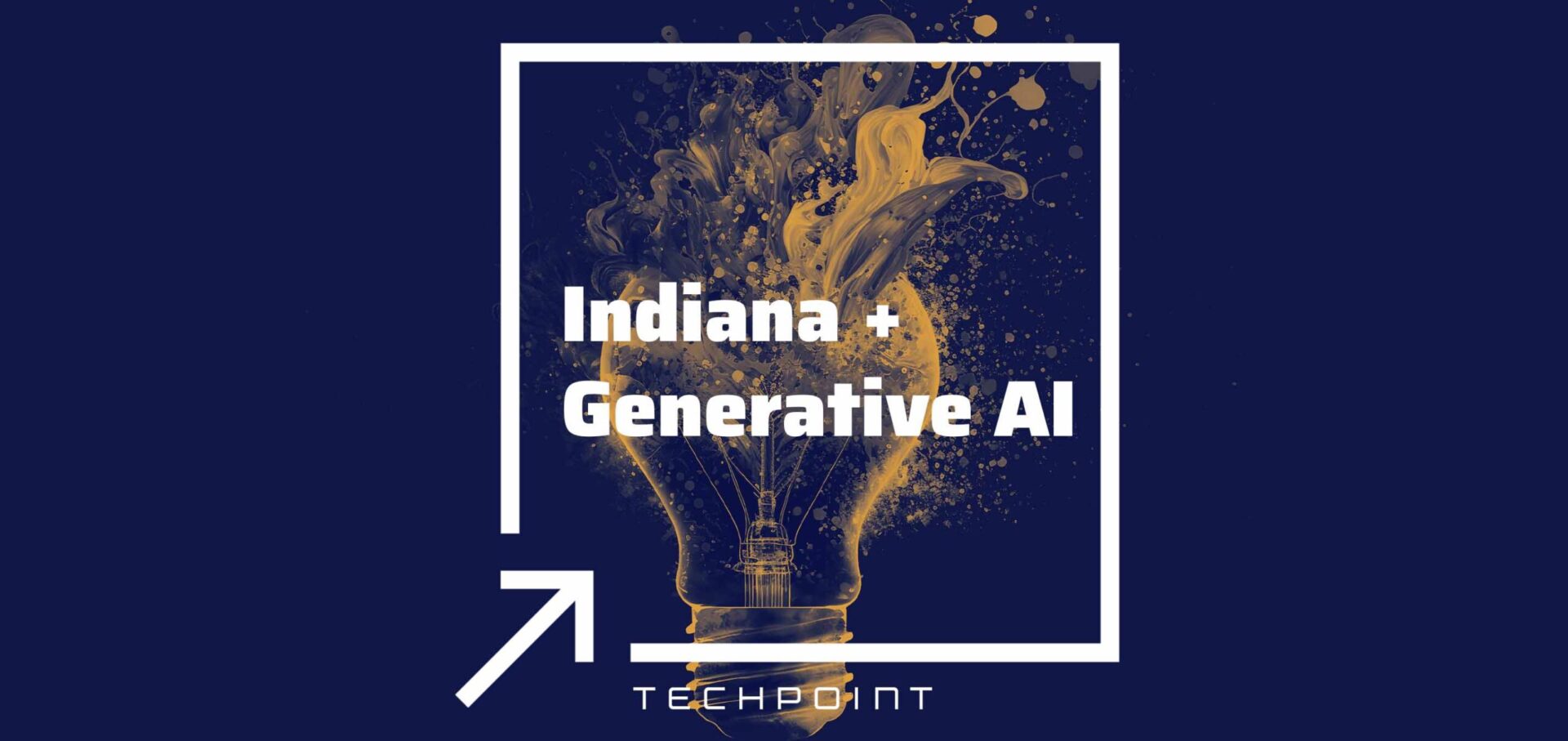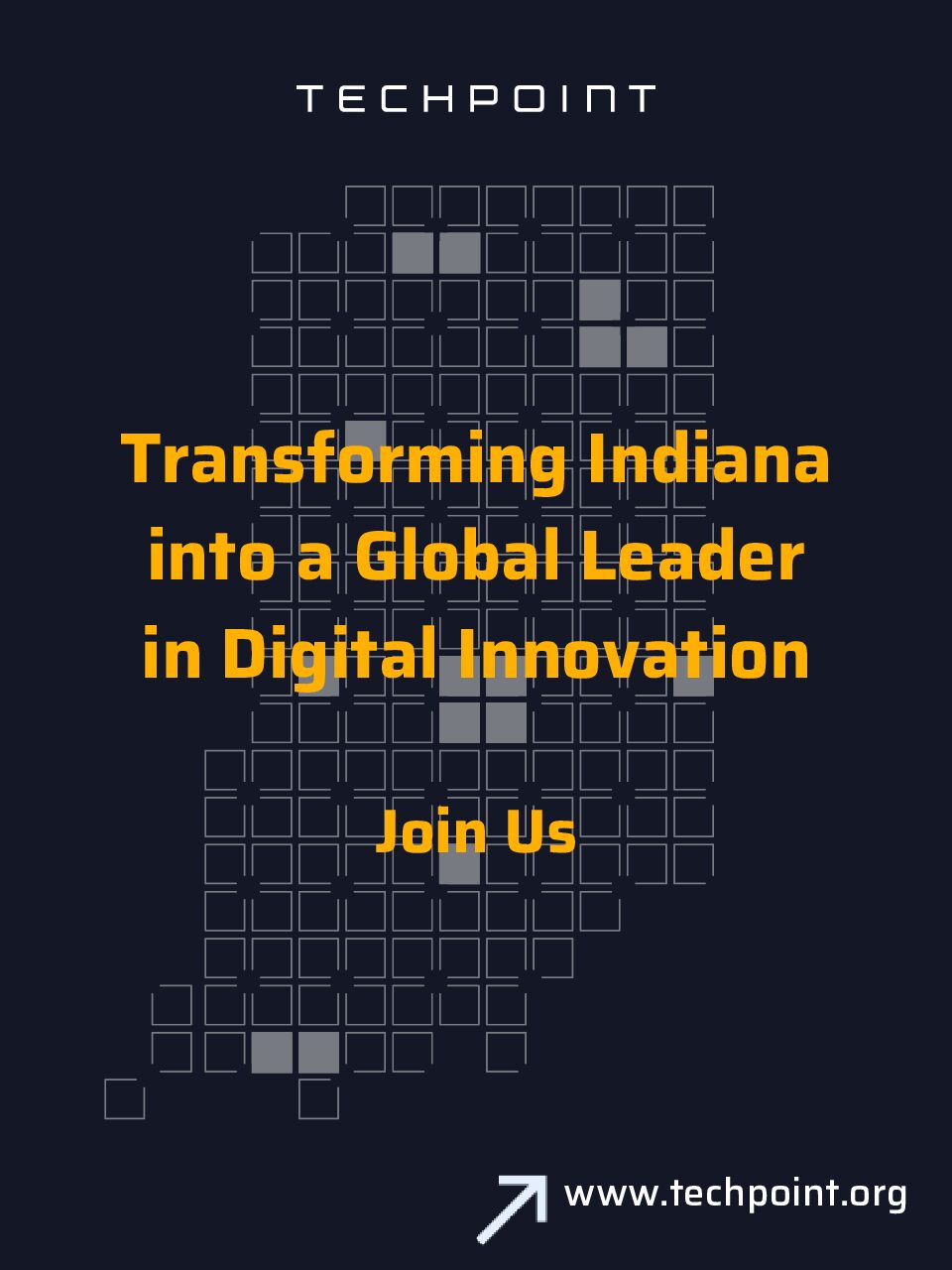Generative AI and Indiana’s Tech Community
The world is abuzz with chatter about generative artificial intelligence (AI) and how new tools, such as ChatGPT, can be leveraged to help generate ideas, create new work products and even complete simple tasks.
Many businesses, including those in the Indiana tech community, are in the early stages of exploring the ways generative AI can be used in their organizations. The opportunities are endless, and tech companies in Indiana are already seeing positive outcomes from utilizing AI tools.
The general sentiment toward AI is positive in the Indiana tech community.
As with any new technology, the sentiment can range from excitement to skepticism. In the Indiana tech community, the majority seem to be excited about the potential of AI.
“Generative AI creates countless opportunities for creative and technical roles alike by essentially serving as a springboard to expand and create,” says Cassandra Karnick, director of marketing at ConverSight. “Having a behind-the-scenes perspective as a part of a generative AI company, I’m incredibly excited about the untapped potential this advanced technology has in a business setting, from enabling data democratization to improving everyday tasks and processes.”
Mitch Causey, chief executive officer of Demandwell, agrees. “I’m incredibly excited and passionate about AI. I believe what AI can do today is as big of a shift as the internet.”
Some are feeling a wide range of emotions about AI’s potential. “ I’m excited, surprised, skeptical, nervous and curious all at the same time,” says Dr. David Crandall, professor of computer science and director of the Luddy Artificial Intelligence Center at Indiana University Bloomington. “AI is not magic, and I think it is like any technology or tool. We are just beginning to understand its possibilities and limitations. I’m excited and curious to see where the technology goes, but I have a healthy skepticism about much of the hype about it.”
Others are skeptical both about the potential and how it will be used. “I’m skeptical. There is a massive miasma of hype and misinformation around topics related to AI, machine learning and chat programs and how they might be used or misused,” says Dr. Eugene H. Spafford, professor and emeritus executive director of CERIAS at Purdue University. “I remember previous hype cycles around 5th-generation systems, robotics and automatic language translation. The enthusiasm each time resulted in some advancements that weren’t as profound as predicted. That enthusiasm faded as limitations became apparent and new, shiny technologies appeared to be chased.”

Tech organizations are already using AI for marketing or content needs.
While AI offers a variety of possibilities, most tech organizations seem to be using or testing AI to help with their marketing or content needs.
“We use ChatGPT to help create outlines for blog posts and to tighten up social media posts. It’s also been a lifesaver to shorten some complicated language, and I also use Vidyo.ai to create clips from videos and podcasts. This tool pulls out important segments and automatically creates subtitles. It’s been a real game changer for us,” says Jara Rowe, content marketing specialist at Trava. Similarly, RJ Talyor, operating partner at High Alpha, leverages AI to write first drafts of blogs and also sources company lists using ChatGPT.
“As a marketer, ChatGPT has opened a pandora’s box of inspiration across marketing deliverables,” says Karnick. “Whether it’s crafting advertising messaging to fit the intent and address pain points of a specific ideal customer profile or generating marketing emails and blog post outlines, ChatGPT helps my team optimize our time, allowing us to up-level our skills to strategies and deliverables that are higher priority and create a greater impact.”
Some tech companies have already taken the plunge and created integrations within their platforms for generative AI. “We’ve absolutely tested AI,” says Causey. “ We’ve also built an integration with OpenAI’s APIs to use generative AI when creating content for SEO success at scale.”
On the education side, universities are exploring AI possibilities in their research. “Many at IU are studying or using Large Language Models (LLMs) like ChatGPT in our research,” says Dr. Crandall. “For example, in collaboration with Professor Selma Sabanovic, we are using a Large Language Model in a new interactive social robot that we’re building. The LLMs are really good at helping the robot to understand what people are saying to it and to generate natural-sounding responses. Other researchers here at IU are studying and developing new algorithms for LLMs, while others are investigating how LLMs could be used to spread information so that we can try to prevent that use.”
The biggest potential for AI is saving time and resources.
With an innovation like AI, the variables are infinite, and therefore, the possibilities are endless. Companies are discovering new opportunities to leverage AI every day.
“AI tools save a lot of time for our mighty marketing team of two; these tools have become the equivalent of another team member,” says Rowe. “However, there have been moments I spent a much longer time talking to ChatGPT to have it generate what I wanted. I would have saved time just doing it myself. Once the tool learns others’ personalities, it will be an even bigger game changer.”
Talyor sees the biggest potential for AI tools in taking over tasks so individuals can spend more time on idea generation. “The biggest potential is in human augmentation. Lots of the stages of work we dread (e.g., the research, writing a first draft) can be completed with a generative AI solution. By using these tools to complete these tasks, human editing, creativity and curation take place. I’m excited about these generative AI tools serving as companion tools to the work we create so we can spend more time in creativity.”
Dr. Crandall, however, sees opportunities in the idea-generation space. “I think AI tools could be great at helping us find information or help spark our creativity by giving a starting point to help us brainstorm ideas. They can also lower barriers for people who speak different languages, as well as those who do not have expertise with computers. It’s now possible to ask the computer to do something in natural language and get it done, even for someone who has no computer programming experience.”
Causey has already seen both time and financial savings by leveraging AI. “The time savings of using AI is truly immense. In our specific use case, I personally created 50 well-formed and well-thought rafts of 1,500-word articles in only 75 minutes. In the past, that would have taken me 16 hours and cost over $5,000.”
For Karnick, knowing how to use AI will be important for job retention in the future. “Generative AI is a critical piece of the future of work. While some argue that AI will replace people and jobs, a more pressing discussion is around the importance of adopting AI in your role and processes because those that know how to leverage AI will eventually replace those that don’t.”

There are a lot of ethical considerations to take into account when leveraging AI.
AI can provide a lot of opportunities, but with great power comes great responsibility.
“I love generative AI as a starting point for creating content, but I believe it should never be the end. The dangers in ethics come when AI is left to its own devices. A human should always be a check and balance for the robot,” says Causey.
“No decisions should be made by any of these systems without thoughtful, explicit human endorsement,” agrees Dr. Spafford. “These tools are not really ‘intelligent’ and have already shown a tendency to ‘hallucinate.’ They do not embody human values—or even common sense. We have seen some very biased and incorrect outputs from these systems that would be terrible to use as final products.”
Dr. Crandall explores some important questions about AI that are yet to be answered. “There are many ethical considerations to take into account when leveraging AI. First, there’s the fact that generative AI is being trained on large-scale data collected from the web. It’s probably mostly public information, but it raises all kinds of questions, including if an artist doesn’t want generative AI to copy their style or their work,” says Dr. Crandall.
“Second, when I ask generative AI to create an article or a photograph, who ought to own the intellectual property of the work? Me? The generative AI service provider? The people whose work was used to train the model? How do I know that the article or photograph is really ‘new’ and not just a plagiarized version of something that the model found on the web?”
Dr. Crandall also notes the limits of the use of generative AI. “Should students be able to use it to write their essays for them, or is it ethical to ask generative AI to create fake photos of events that didn’t happen? What happens when people start relying on generative AI, and it gives them the wrong answers? For example, what if people ask ChatGPT for medical advice and it recommends something harmful?”
“AI is trained on training data, and training data sets themselves are dated, human-created and flawed,” says Talyor. “First, we need to understand that any generative AI based on them will also be flawed, incorrect and/or biased. Therefore, building anything on top of these models as-is will create ethical questions for any person or organization. It’s similar to trying to build a skyscraper on a swamp; it’s possible, but you have to examine the structural risks and mitigate them appropriately. Who knows what might be lurking there beneath the surface.”

If we want AI to be successful, it has to be human-centered.
With all of AI’s potential, at the heart of it all is humans. How will humans use it? How can we use it? How will we prevent negative outcomes? How can we create legislation to ensure proper use?
“AI presents so many opportunities, but we must be careful about developing the technology in a human-centered way so that it makes people’s lives better and does so equitably,” says Dr. Crandall. “That’s one reason that I am so proud to be at an institution like Indiana University, which has a public mission. Responsibly developing AI technology will involve interdisciplinary work across so many different fields—computer science and math, but also psychology, ethics, law, business, education, and many more.”
AI also opens the door to having better access to information that will help us make better decisions for businesses and humans. “While generative AI is a huge buzzword at the moment, the concept of data storytelling and its importance in a business setting is super interesting,” says Karnick. “With generative AI, businesses are now able to understand the state of their business in the form of a story, layered with context and personalization. This is a massive step in the data analytics world and opens access to information beyond data scientists and business analysts to virtually any role. Now more than ever, businesses can truly grasp the story their data is telling in real-time and personalized like never before. Generative AI is just the beginning.”
As generative is continually explored, it’ll be important for organizations to take the human factor into account. One thing is for certain, though; AI will change the world as we know it today.




